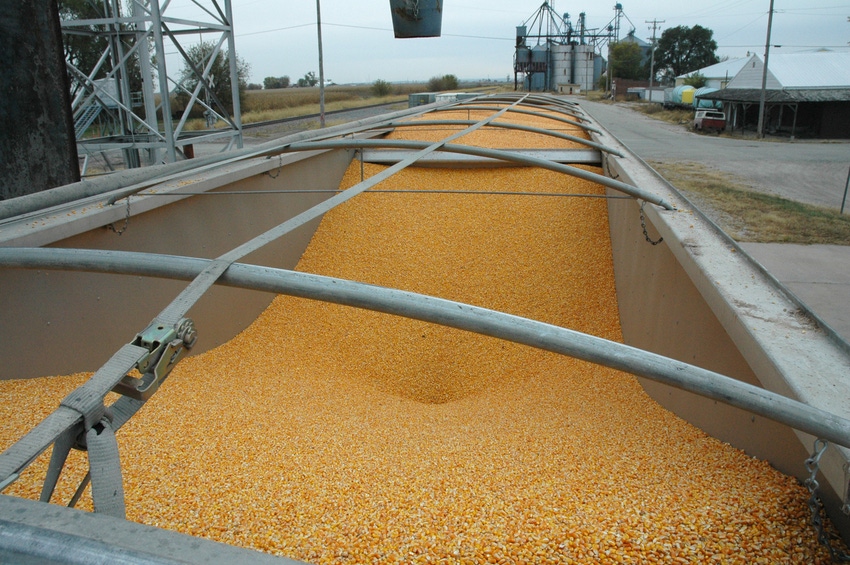
Even though total grain export inspections for corn, soybeans and wheat fell shy of weekly rates needed to reach USDA marketing year forecasts, there were some bright spots for the week ending June 20, according to Farm Futures senior grain market analyst Bryce Knorr.
“China shipped out 19.5 million bushels of its 221 million in outstanding sales in soybeans, and that pace could pick up now that the river system is open again,” he notes. “Exporters are using a variety of ports to originate those shipments, with another boat done out of Toledo last week.”
China also purchased 2.3 million bushels of corn, Knorr adds.
“Corn should continue to play second fiddle to soybeans as end users around the world turn to South America for supplies,” he says.
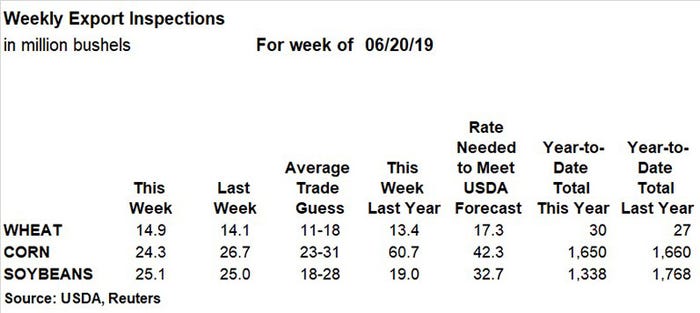
In total, corn saw 24.3 million bushels of export inspections last week, down slightly from the prior week’s tally of 26.7 million and on the low end of trade estimates, which ranged between 23 million and 31 million bushels. The weekly rate needed to match USDA forecasts moved higher, to 42.3 million bushels, while cumulative totals for the 2018/19 marketing year topped 1.650 billion bushels, trending just below last year’s pace.
Japan was the top destination for U.S. corn export inspections last week, with 9.6 million bushels. Other leading destinations included Mexico (5.0 million), Colombia (2.5 million) and China (2.3 million).
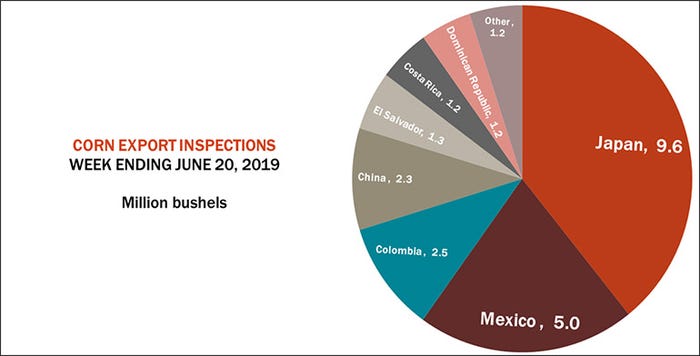

Soybean export inspections totaled 25.1 million bushels last week, up fractionally from the prior week’s 25.0 million bushels and on the high end of trade estimates that ranged between 18 million and 28 million bushels. The weekly rate needed to meet USDA forecasts moved up to 32.7 million bushels, with cumulative totals for 2018/19 shrinking 24% lower year-over-year after reaching 1.358 billion bushels.
China’s 19.5 million bushels was far and away the leading destination for U.S. soybean export inspections last week. Mexico added another 1.4 million bushels, with all other destinations picking up the remaining 4.2 million bushels.
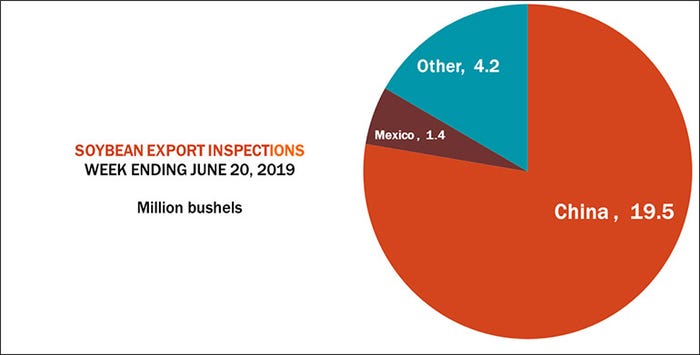
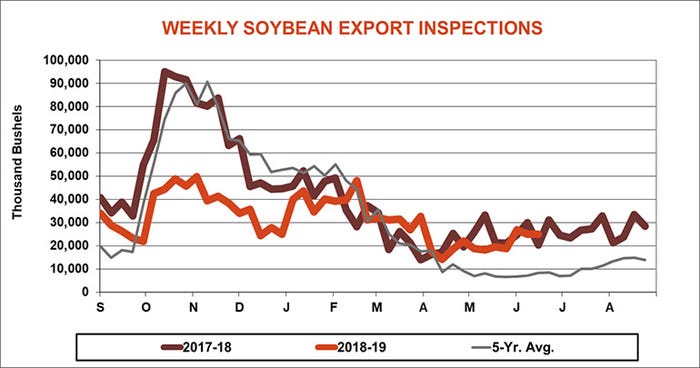
Wheat export inspections climbed slightly week-over-week to reach 14.9 million bushels, landing in the middle of average trade estimates that ranged between 11 million and 18 million bushels. The weekly rate needed to match USDA forecasts still moved higher, however, to 17.3 million bushels. Cumulative totals for the young 2019/20 marketing year are now at 30 million bushels.
“Wheat business wasn’t bad, with a shipment to Algeria a welcome bit of business into the Mediterranean,” Knorr says. “But other buyers continue to take small amounts ahead of the U.S. harvest.”
Algeria topped all destinations for U.S. wheat export inspections last week, with 4.1 million bushels. Other leading destinations came from a variety of countries that included Japan (2.1 million), Taiwan (2.0 million), El Salvador (1.8 million), Nigeria (1.8 million) and Guatemala (1.8 million).
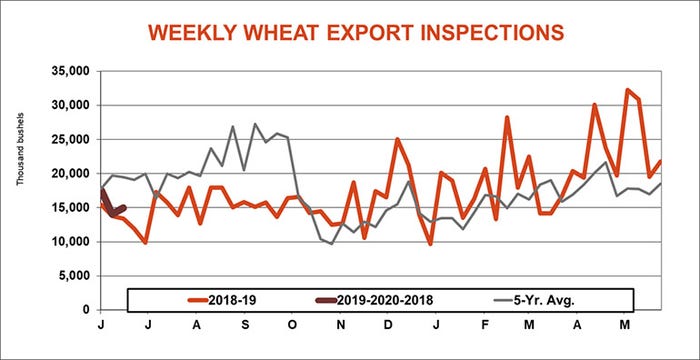
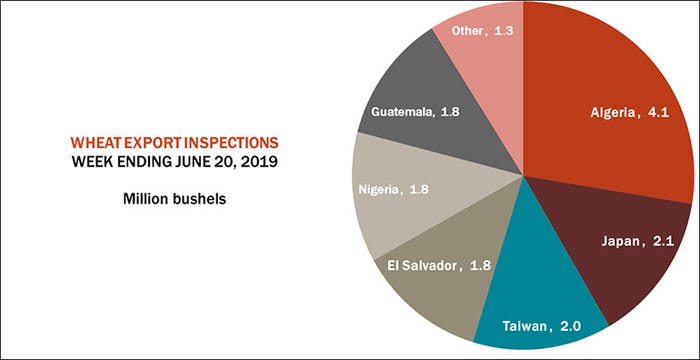
About the Author(s)
You May Also Like






